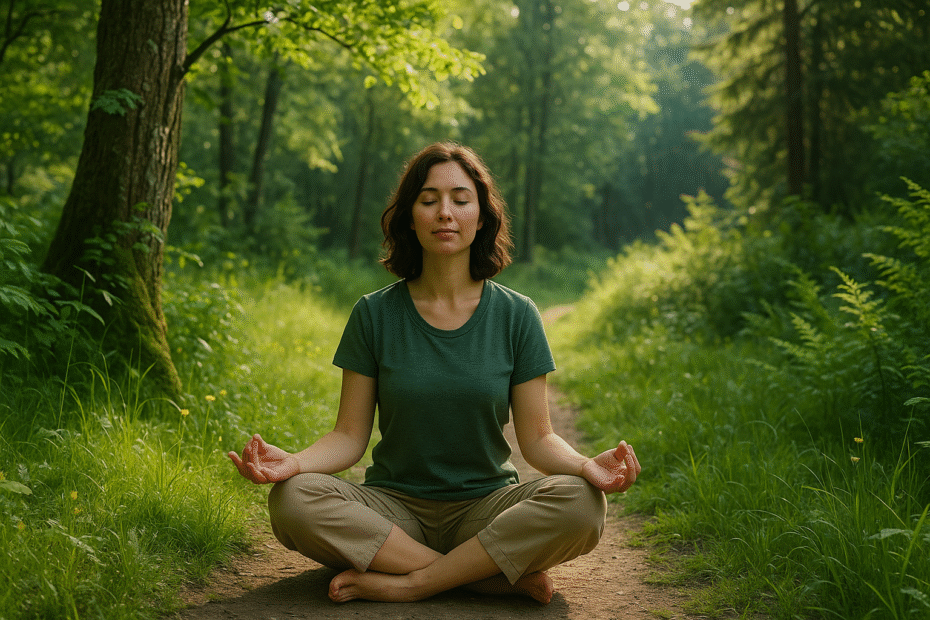Introduction: The Green Cure We All Need
In an era of increasing mental health challenges and urban overstimulation, more people are seeking healing outside four walls — in the forests, gardens, and quiet corners of the natural world. This emerging shift is embodied in eco-therapy and its twin concept, green therapy — both emphasizing nature wellness as a transformative tool for emotional resilience and mental clarity.
With rising climate anxiety, screen burnout, and disconnection from the Earth, the idea of reconnecting with nature isn’t just nostalgic — it’s a future-forward mental health solution.
What is Eco-Therapy and Green Therapy? A Holistic View
Eco-therapy (also called green therapy) is a form of nature-based therapy that integrates outdoor environments into mental health care. While “eco-therapy” is rooted in ecopsychology, the term green therapy has gained popularity in clinical, wellness, and even educational settings.
These practices may include:
- Forest bathing (Shinrin-Yoku)
- Nature immersion therapy
- Outdoor group or individual counseling
- Gardening and horticultural therapy
- Animal-assisted therapy
- Eco-mindfulness techniques like mindful walking or nature meditation
The foundation of green therapy is the belief that we are not separate from nature, but deeply interconnected with it — psychologically, emotionally, and biologically.
Why Nature for Mental Health is Gaining Momentum
Clinical research increasingly shows that connecting with nature can significantly enhance mental health:
- A Stanford University study found that walking in natural environments reduces activity in the brain linked to depression.
- Green therapy lowers cortisol (the stress hormone) and boosts endorphin levels.
- Outdoor therapy practices have shown success in reducing anxiety, trauma symptoms, and even substance abuse relapses.
In fact, many psychologists now recommend “green prescriptions,” where time in nature is prescribed alongside or in place of medication.
Top Benefits of Eco-Therapy and Green Therapy Practices
- Reduced Anxiety and Depression
Green spaces have a measurable calming effect on the nervous system, reducing anxiety and depressive thoughts. - Enhanced Emotional Regulation
Green therapy techniques promote mindfulness and relaxation, helping manage emotional fluctuations. - Sharper Focus and Mental Clarity
Time outdoors improves attention span and is especially beneficial for people with ADHD or cognitive fatigue. - Improved Sleep and Circadian Rhythms
Natural light exposure regulates melatonin production, helping you sleep better. - Boosted Immune Health
Trees release phytoncides, natural chemicals that stimulate the body’s immune defenses.
Eco-Mindfulness Techniques for Everyday Mental Wellness
You don’t need a therapist or a forest retreat to begin. These eco-mindfulness techniques make green therapy accessible:
- Sit Spot Meditation: Choose a quiet natural spot to sit for 10–20 minutes, simply observing sights, sounds, and sensations.
- Grounding with Barefoot Walking: Let your feet touch grass or soil to discharge electromagnetic stress.
- Tree Breathing: Stand by a tree and sync your breath with its gentle swaying or rustling.
- Nature Journaling: Document thoughts, drawings, or reflections during time in natural surroundings.
These practices reduce overthinking, foster stillness, and deepen your connection to the earth.
Who Can Benefit from Green Therapy and Eco-Therapy?
Both therapies have proven effective across demographics:
- Individuals dealing with stress, anxiety, depression, PTSD
- Urban dwellers disconnected from natural environments
- Teens and children coping with screen overload or behavioral disorders
- Elderly people struggling with loneliness or mobility limitations
- Burned-out professionals seeking mental restoration
What unites them all is a need to reclaim peace and purpose through reconnection with nature.
Why Eco-Therapy and Green Therapy Are the Future of Mental Health
🌱 Rising Trends Driving Growth:
- Climate Consciousness: As environmental awareness grows, people are seeking earth-aligned wellness practices.
- Urbanization and Stress: City living is linked to higher anxiety and lower access to green spaces.
- Digital Overload: With rising screen time, many are turning to green therapy to escape burnout and mental fatigue.
- Preventive Wellness Movement: From biohacking to forest retreats, people want proactive mental health tools — and nature fits perfectly.
🔮 Where It’s Headed:
- Therapeutic Eco-Retreats offering guided nature healing
- Nature-integrated schools and corporate wellness programs
- Community garden therapy for urban neighborhoods
- Forest schools for children promoting holistic growth
- Green prescriptions in national healthcare systems (already in use in countries like the UK and New Zealand)
How to Start Your Own Eco-Therapy or Green Therapy Journey
You don’t need a cabin in the woods. Start wherever you are:
- Add a 20-minute walk in your nearest green space.
- Decorate your home with indoor plants or small gardens.
- Plan a weekly “digital detox” outing in nature.
- Join a local walking group, community garden, or nature therapy circle.
- Use guided green therapy apps or YouTube channels that lead nature meditations.
Start small. Consistency is more important than intensity.
Conclusion: Heal with Earth, Grow with Green
Eco-therapy and green therapy are more than temporary trends — they are part of a growing global realization: We cannot truly heal ourselves without healing our connection to nature.
In a world increasingly dominated by concrete, screens, and noise, eco-therapy invites us to slow down, breathe deep, touch the soil, and listen to the wind.
The future of mental wellness is not just inside a clinic — it’s under trees, beside rivers, and in the songs of birds.
